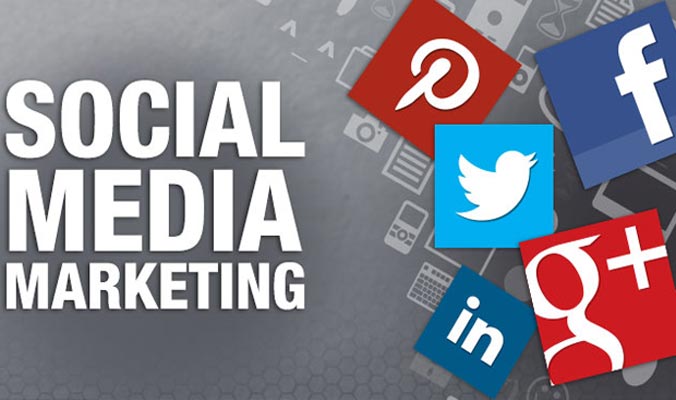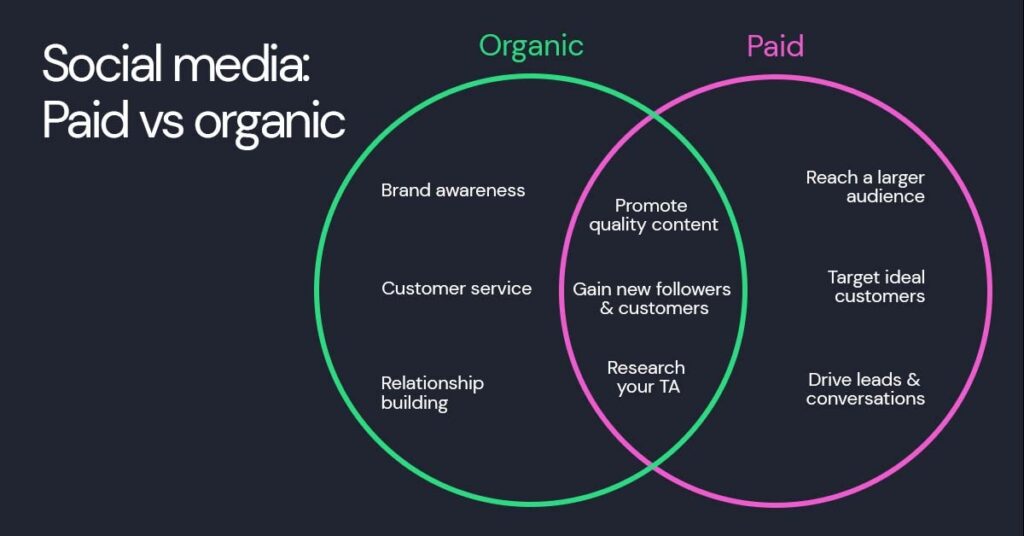What is Social Media Marketing (SMM)?
Social media marketing (also known as E-marketing) is the process of developing and disseminating content—texts, photos, videos, etc.—to a large audience. This can be done through websites and social media platforms like Facebook, Instagram, Twitter, and Linkedin. SMM helps to enhance brand visibility and foster meaningful client engagement. Businesses use social media marketing these days to increase website traffic, interact with audiences, establish brand awareness, and accomplish marketing goals.
E-marketing techniques vary by business type, goals, audience preferences, employing both organic and paid methods to expand customer reach. Moreover, e-marketing uses social media advertisements, community involvement, and the creation of pertinent information in order to communicate with audiences. Influencers can assist businesses in promoting their goods and services. Besides, monitoring and assessing social media campaign performance using analytics tools to gauge crucial metrics like conversions and engagement is another technique to grow the company.
The ultimate guide to social media marketing (SMM)

.
In the digital age, social media is essential for businesses to interact with customers, build brand awareness, and boost sales. To be competitive in the market, one must make use of its enormous user base.
- Know Your Audience: Firstly, to properly personalize your content, ascertain the demographics, interests, and behaviors of your target audience.
- Establish Specific Goals: To effectively steer your plan, decide on your goals for the social media material before moving forward, such as lead creation, sales, or brand exposure.
3. Provide Captivating Content: Provide material that draws readers in and promotes conversation. Moreover, to keep your audience interested, mix up your format usage with graphics, videos, polls, and questions.
4. Be Authentic: Honesty and transparency in your material will help you gain the audience’s trust. As a result, keep posts from being unduly sales-oriented or promotional.
5. Consistency is Key: To keep your audience interested and your business at the forefront of their minds, stick to a regular posting schedule. Before anything else, plan and arrange your content with social media scheduling tools.
6. Make Use of Visuals: On social media, visual content typically performs better. For an eye-catching post, include GIFs, infographics, videos, and high-quality photos.
7. Optimize for Each network: Adapt your material to the specific features and user preferences of each social media network. Adjust your strategy accordingly; what works on Instagram might not work as well on LinkedIn.
8. Promote Engagement: Inspire your readers to interact with your material by posing queries, welcoming feedback, and holding competitions or freebies. In order to promote a feeling of community, quickly reply to messages and comments.
9.Have Calls-to-Action (CTAs) included: Make sure your audience knows exactly what you want them to do after an engagement, such as visiting your website, subscribing to your email, or making a buy.
10.Monitor and Evaluate Outcomes: Make use of social media analytics tools to monitor the effectiveness of your content and modify your plan as necessary. To determine the success of your endeavors, paying close attention to metrics like as reach, engagement, clicks, and conversions is equally important.
11. Keep Up with Trends: To stay ahead of the curve, keep a watch on new trends and modifications to social media algorithms. Also, to keep your content relevant and up to date, experiment with various features and layouts.
12.Test and Iterate: Finally, keep experimenting with various content, messaging, and tactics to find what works best for your target audience. Utilize data-driven insights to gradually improve your strategy.
Paid social media marketing (SMM)
Paid SMM goes beyond simple boosting or ad running by leveraging platform specifics for quantifiable outcomes. It is necessary for any business hoping to have a big online presence and is vital for meaningful results.
Targeted Reach: You can target your audience more precisely with paid social media marketing. You may target your content at the people who are most likely to interact with it based on their demographics or behaviors, so that every dollar you spend will get the most out of it.

Enhanced Visibility: Organic reach on social media has its limitations in this disorganized landscape. By cutting through the clutter, paid social media marketing makes sure the correct people see your material when they need to. You can stay at the front of people’ minds and improve brand visibility by making a big appearance in their feeds.
Measurable ROI: The fact that sponsored social media marketing may yield measurable outcomes is among its greatest benefits. You can monitor the effectiveness of your campaigns in real-time with comprehensive analytics and monitoring tools, enabling prompt optimization and adjustments to optimize return on investment.
Strategic Flexibility: Paid SMM offers unparalleled flexibility, allowing you to experiment with different formats, targeting options, and objectives to find what works best for your brand. Whether it’s driving website traffic, generating leads, or increasing sales, you can tailor your campaigns to meet specific goals.
Competitive Edge: In a competitive market, staying ahead of the curve is crucial. Paid SMM gives you the edge you need to outshine competitors and establish your brand as a leader in your industry. Furthermore, by investing in strategic campaigns, you position yourself for long-term success and growth.

Benefits of social media marketing (SMM)
SMM provides numerous advantages to organizations of all sizes and sectors.
- Enhanced Brand Awareness: Social media gives businesses more exposure and links them to a large audience. So, regular publishing and interaction improve targets’ brand recognition.
- Enhanced Brand Loyalty: Social media interaction with consumers fosters a sense of belonging and loyalty. Relationships are strengthened when comments and messages are promptly addressed.
- Cost-Effective Marketing: SMM is frequently less expensive than traditional forms of promotion. Organic reach is cost-free on social platforms, while paid advertising options are often cheaper than traditional methods.
- Enhanced Website Traffic: You can increase website traffic by sharing information and deals on social media platforms. Apart from SEO optimization, companies can increase their conversion rates by using Facebook and Instagram stories and by including links to their websites in their postings.
- Improved Knowledge of Audience Insights: Social media sites offer insights into their audience. Businesses modify their tactics in light of this important knowledge to better engage with their targets.
- Improved Customer Engagement: Social media allows for direct communication with customers, improving customer service by answering messages, comments, and mentions quickly.
- User-Generated Content Opportunities: Social media is a powerful marketing tool since it encourages user-generated content and offers real endorsements and social evidence.
- Ability to Showcase Goods and Services: Social media platforms offer businesses the ability to visually showcase their products and services. Superior images, videos, and product demonstrations allow businesses to engage and entice potential customers.
- Access to International Markets: Social networking sites are widely used, giving companies access to a global audience. This gives companies the chance to reach a wider audience and draw clients from a variety of geographic areas.
- Measurable Results and ROI: Lastly, e-marketing provides accurate campaign analysis. Businesses use conversions, reach, and engagement to gauge their social media success, with the use of analytics and tracking tools.
